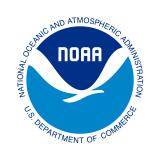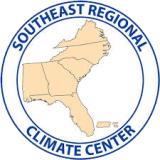Southeast Climate Monthly Webinar: November 15, 2022
The last month was unseasonably warm in the Southeast, with much above-average temperatures reported across many locations. Most of the region continued to remain dry due to low precipitation rates, which has led to the continuation and gradual expansion of drought in many areas. The exception is those areas affected by Hurricane Nicole, which made landfall in Florida on November 10. Nicole resulted in significant coastal erosion and property damage; it is the first November hurricane to strike Florida in 37 years. Rain from Nicole helped alleviate dry soils and stop drought expansion, at least for now. Streamflows are near normal to below normal across most of the Southeast, except for the Florida Peninsula; this follows the normal pattern where interior Southeast streamflows are typically at the lowest levels for this time of the year.
Looking ahead: The next couple of weeks look to be cool and wet, with a return to warm and dry conditions by the end of the month. Late November is the start of the primary water resources recharge period for the interior Southeast whereby rainfall and runoff increases. This is also the time period when the flood season slowly begins. With past dry conditions continuing into early winter and with possible drought continuation and/or expansion, a below-normal flood season can also be expected across the Southeast. The exception is the Florida Peninsula where the dry season begins and the normal risk for flooding is low. La Niña is expected to continue through the winter (3rd in a row!), with a transition to ENSO-neutral favored in the spring. Historical La Niña trends favor an increased chance of a warmer and drier winter/early spring across the Southeastern U.S.
Check out this month’s special presentation, El Niño–Southern Oscillation (ENSO) and the 2022–23 Winter Outlook, which provides an excellent overview of ENSO, and what to expect over this winter and moving into the spring.
About This Webinar
The Southeast Climate monthly webinar series is hosted by the Southeast Regional Climate Center, the National Integrated Drought Information System (NIDIS), and the NOAA National Weather Service. These webinars provide the region with timely information on current and developing climate conditions such as drought, floods, and tropical storms, as well as climatic events like El Niño and La Niña. Speakers may also discuss the impacts of these conditions on topics such as agriculture production, water resources, wildfires, and ecosystems.






